Pernille Ripp's Blog, page 3
December 17, 2023
Race to 100 with 3D printed math manipulatives

As part of our 1st grade work in math, we are heading into place value, ten pairs, and addition.
So of course, one of the games we will be playing more than once, is Race to 100, a fantastic math game that can be used to teach addition, subtraction, place value and so much more.
As we prepared the game, we realized we needed dice and instead of adding stickers to regular dice, we figured we could have some 3D printed.
Enter my husband and his trusty 3D printer.
Math manipulativesHe printed me 18 individual dice with the numbers: -1, +1, +1, -10- and +10, +10
And that file can be found right here
Need the Race chart templates – right here
Want dice that have -100 and +100, here they are in that same file, just pick the one you want.
And how do you play?There are many variations of the game, the sky is the limit with this one. I will be playing it using these instructions courtesy of Bard – love that AI.
The Race to 100
Objective:
Be the first player to reach the number 100 on the hundred chart using a single die with the numbers -1, +1, -10, and +10.
Materials:
A hundred chart or large sheet of paper with the numbers from 1 to 100 written in columnsOne die with the numbers -1, +1, -10, and +10 – for older kids, you can use two dice.Game pieces (such as small colorful blocks or tokens) for each playerSet-Up:
Each player chooses a game piece and places it on the number 1 on the hundred chart.Gameplay:
Players take turns rolling the die.If the player rolls a -1, their game piece moves backward one space. If this happen on their first turn, they just stay where they are.If the player rolls a +1, their game piece moves forward one space.If the player rolls a -10, their game piece moves backward ten spaces.If the player rolls a +10, their game piece moves forward ten spaces.Players cannot move their game piece beyond the number 100. If they roll a number that would cause them to exceed 100, their game piece remains on its current space.The first player to reach the number 100 on the hundred chart wins the game!While I know this will only be relevant to some of you, I figured I would share it in here too. Especially because all it takes is a regular printer and 3D printer and then you have the game.
December 9, 2023
A Graphic Novel Gift Guide

I love these end of the year lists that come out, especially now that I sit in Denmark and don’t get to see quite the same amount of books written in America as I normally would.
So I figured why not share some of my favorite graphic novels, starting with this gift guide in case you are looking for that perfect gift for yourself or another reader.

Maisie is on her way to Fancon! She’s looking forward to meeting her idol, Kara Bufano, the action hero from her favorite TV show, who has a lower-leg amputation, just like Maisie. But when Maisie and her mom arrive at the convention center, she is stopped in her tracks by Ollie, a cute volunteer working the show. They are kind, charming, and geek out about nerd culture just as much as Maisie does. And as the day wears on, Maisie notices feelings for Ollie that she’s never had before. Is this what it feels like to fall in love?

Huda and her sisters can’t believe it when her parents announce that they’re actually taking a vacation this summer . . . to DISNEY WORLD! But it’s not quite as perfect as it seems. First Huda has to survive a 24-hour road trip from Michigan to Florida, with her sisters annoying her all the way. And then she can’t help but notice the people staring at her and her family when they pray in public. Back home in Dearborn she and her family blend right in because there are so many other Muslim families, but not so much in Florida and along the way. It’s a vacation of forced (but unexpectly successful?) sisterly bonding, a complicated new friendship, a bit more independence, and some mixed feelings about her family’s public prayers. Huda is proud of her religion and who she is, but she still sure wishes she didn’t care so much what other people thought.

Pedro Martín has grown up hearing stories about his abuelito—his legendary crime-fighting, grandfather who was once a part of the Mexican Revolution! But that doesn’t mean Pedro is excited at the news that Abuelito is coming to live with their family. After all, Pedro has 8 brothers and sisters and the house is crowded enough! Still, Pedro piles into the Winnebago with his family for a road trip to Mexico to bring Abuelito home, and what follows is the trip of a lifetime, one filled with laughs and heartache. Along the way, Pedro finally connects with his abuelito and learns what it means to grow up and find his grito.

Sixth grade isn’t as great as Rex thought it would be. He’s the only kid who hasn’t had a growth spurt, and the bullies won’t let him forget it. His closest friend is unreliable, at best. And there’s a cute girl in his class, who may or may not like him back. With so much going on, everything is a blur — including Rex’s vision! So when he discovers that he needs glasses, and his family can only afford the ugliest pair in the store, any hope Rex had of fitting in goes completely out of focus.

Charlie has a foolproof plan for the first day at her new middle school. Even though she’s used to starting over as the new kid—thanks to her military family’s constant moving—making friends has never been easy for her. But this time, her first impression needs to last, since this is where her family plans to settle for good. So she’s hiding any interests that may seem “babyish,” updating her look, and doing her best to leave her shyness behind her…but is erasing the real Charlie the best way to make friends? When not everything goes exactly to plan—like, AT ALL—Charlie is ready to give up on making new friendships. Then she meets the Curlfriends, a group of Black girls who couldn’t be more different from each other, and learns that maybe there is a place for Charlie to be her true self after all.

Ignacio “Iggy” Garcia is an Ohio-born Colombian American teen living his best life. After bumping into Marisol (and her coffee) at school, Iggy’s world is spun around. But Marisol has too much going on to be bothered with the likes of Iggy. She has school, work, family, and the uphill battle of getting her legal papers. As Iggy stresses over how to get Marisol to like him, his grandfather comes to the rescue. The thing is, not only is his abuelito dead, but he also gives terrible love advice. The worst. And so, with his ghost abuelito’s meddling, Iggy’s life begins to unravel as he sets off on a journey of self-discovery.

Livy is already having trouble fitting in as the new girl at school—and then there’s Viola. Viola is Livy’s anxiety brought to life, a shadowy twin that only Livy can see or hear. Livy tries to push back against Viola’s relentless judgment, but nothing seems to work until she strikes up new friendships at school. Livy hopes that Viola’s days are numbered. But when tensions arise both at home and at school, Viola rears her head stronger than ever. Only when Livy learns how to ask for help and face her anxiety does she finally figure out living with Viola.

Dan’s always been a good kid. The kind of kid who listens to his teachers, helps his mom with grocery shopping, and stays out of trouble. But being a good kid doesn’t stop him from being bullied and feeling like he’s invisible, which is why Dan has low expectations when his parents send him on a class trip to Europe. At first, he’s right. He’s stuck with the same girls from his middle school who love to make fun of him, and he doesn’t know why his teacher insisted he come on this trip. But as he travels through France, Germany, Switzerland, and England, a series of first experiences begin to change him―first Fanta, first fondue, first time stealing a bike from German punk rockers… and first love.

This book tells the true stories of five brave teens fleeing their home countries of Guatemala, El Salvador, Honduras, and Guinea, on their own, traveling through unknown and unfriendly places, and ultimately crossing into the US to find refuge and seek asylum. Based on extensive interviews with teen refugees, lawyers, caseworkers, and activists, Tracy White shines a light on five individual kids from among the tens of thousands of unaccompanied minors who enter the US each year. In stark black and white illustrations, she helps us understand why some young people would literally risk their lives to seek safety in the US. Each one of them has been backed into a corner where emigration to the US seems like their only hope.

Mia is still getting used to living with her mom and stepfather, and to the new role their Jewish identity plays in their home. Feeling out of place at home and at her Jewish day school, Mia finds herself thinking more and more about her Muscogee father, who lives with his new family in Oklahoma. Her mother doesn’t want to talk about him, but Mia can’t help but feel like she’s missing a part of herself without him in her life.
Soon, Mia makes a plan to use the gifts from her bat mitzvah to take a bus to Oklahoma—without telling her mom—to visit her dad and find the connection to her Muscogee side she knows is just as important as her Jewish side.

Seventh-grader Viv never looks forward to picture day. It’s just another day where she wears a boring braid and no one notices her. (Her two best friends, Milo and Al, don’t count, of course.) But enough is enough. This year, she’s taking matters into her own hands. Literally. Viv grabs a pair of scissors, her phone for live-streaming, and, well, bye-bye braid. Suddenly Viv is an over-night influencer at Brinkley Middle School. Everyone wants her help planning their next big moment—from haircuts, to dance proposals, activist rallies and mathlete championships. She hardly even has time for her friends anymore. It’s exactly how she dreamed of reinventing herself…right?

A new year of school is starting, and Brit finds herself struggling with feelings for a seemingly rude boy from class who might have a soft side. Meanwhile, Christine can’t deny that she likes her best friend Abby…as more than just a friend. The only question is, does Abby have feelings for Christine, too? And will their feelings for each other mess things up in their friend group? Misunderstandings, betrayal, and jealousy are bound to get in the way. But hey! Look on the bright side: They’re in this together. Always.

Darrin Bell was six years old when his mother told him he couldn’t have a realistic water gun. She said she feared for his safety, that police tend to think of little Black boys as older and less innocent than they really are.
Through evocative illustrations and sharp humor, Bell examines how The Talk shaped intimate and public moments from childhood to adulthood. While coming of age in Los Angeles―and finding a voice through cartooning―Bell becomes painfully aware of being regarded as dangerous by white teachers, neighbors, and police officers and thus of his mortality. Drawing attention to the brutal murders of African Americans and showcasing revealing insights and cartoons along the way, he brings us up to the moment of reckoning when people took to the streets protesting the murders of George Floyd and Breonna Taylor. And now Bell must decide whether he and his own six-year-old son are ready to have The Talk.

Shakti is used to being the new girl at school. She and her two moms have moved more times than she can count. With her unborn baby brother on the way, Shakti hopes her family has found their forever home in Amherst, Massachusetts, and that she can finally make friends.
On her first day of seventh grade, she meets Xi and they bond over their shared passion for manga (and pizza with mayo). But the three meanest girls in school—Harini, Emily, and Kelly (aka “HEK”)—are determined to make life miserable for Shakti and her new friends.
When Shakti and Xi discover HEK casting spells in the woods, they fear what might happen to the other kids at school. Drawing on ancient Indian magic, Shakti seeks the aid of Durga Ma to stop HEK. But instead, Shakti accidentally conjures Kali Ma, the destroyer—Durga Ma’s dangerous twin. Kali Ma punishes HEK by transforming them into monsters and curses the entire town. As more and more people begin to fall ill, including Shakti’s mom, will Shakti be able to harness her own strength, power, and empathy to save those she loves—and put an end to all the hate?

Feng-Li can’t wait to discover America with her family! But after an action-packed vacation, her parents deliver shocking news: They are returning to Taiwan and leaving Feng-Li and her older siblings in California on their own.
Suddenly, the three kids must fend for themselves in a strange new world–and get along. Starting a new school, learning a new language, and trying to make new friends while managing a household is hard enough, but Bro and Sis’s constant bickering makes everything worse. Thankfully, there are some hilarious moments to balance the stress and loneliness. But as tensions escalate–and all three kids get tangled in a web of bad choices–can Feng-Li keep her family together?

Sarah has always struggled to fit in. Born in South Korea and adopted at birth by a white couple, she grows up in a rural community with few Asian neighbors. People whisper in the supermarket. Classmates bully her. She has trouble containing her anger in these moments―but through it all, she has her art. She’s always been a compulsive drawer, and when she discovers anime, her hobby becomes an obsession.
Which would you add?
September 7, 2023
Introduction to Visual Literacy Through Graphic Novels
Wondering why this blog is more quiet? It’s because I am much more regularly sharing and creating in my Patreon community. And right now, you can get a free trial. What might you find there? Units such as the one I just posted below.

Giving students, and ourselves, further tools for how to navigate visual literacy is a must in today’s society. After all, most impressions that we get these days are not just from words alone but are accompanied by one or more images.
So why not approach the teaching of visual literacy through one of the most beloved formats of texts; graphic novels? After all, I see many teachers who are not quite sure how to teach this or even how to fully read graphic novels in order to sink into their depths, surely there are students who have the same gaps.
So I spent some time pulling together a 10-day unit plan for this concept, where students are invited to read their own graphic novels and go on a journey of exploration.
In this plan, we’ll not only unravel the mysteries of graphic novels but also nurture critical reading, visual analysis, and creative skills.
So what is in this unit?
Day-by-Day Lesson Plans: The unit offers a structured 10-day plan, complete with detailed activities, guiding questions, and vocabulary. You can follow this plan as-is or adapt it to fit your classroom needs.Flexible Assessment Framework: The unit includes optional assessment frameworks, such as peer feedback and visual narrative presentations. You can choose which assessments align best with your learning objectives.Diverse Mentor Texts: The unit utilizes inclusive mentor texts, including “New Kid” by Jerry Craft and “American Born Chinese” by Gene Luen Yang. However, there are so many other graphic novels you can use. Make sure you choose mentor texts that resonate with your students’ interests and backgrounds.Promoting Cultural Awareness: The unit places a strong emphasis on exploring cultural themes and perspectives within graphic novels, fostering cultural awareness and inclusivity.Creative Expression: Through activities like creating visual narratives, students are encouraged to express their creativity and develop visual storytelling skills.Reflection and Celebration: The unit concludes with a reflection on key takeaways and a celebration of students’ achievements, reinforcing the value of graphic novels and visual storytelling.As always, this is meant to be a helpful tool that you can make your own. I would love to know if you can use this, and also if there are things I can change. I have broken it into pages so that you can print them for easy reference if you want.
To access the unit-plan, become a member of my Patreon community by going here. Like I said, a free trial is available to access resources.
June 10, 2023
Embracing Change: Helping Students Break Free from the Self-Consistency Fallacy
I never thought I would step out of the classroom as a teacher. There was no vision of my future that didn’t have me being a teacher, yet taking a break from physically teaching and working in marketing as a brand writer has been an incredible experience. Not only am I now 100% certain that I want to get back in the classroom, but I have also gotten to test so many of the writing strategies I have taught students throughout the years, expanded my own knowledge of the corporate tech world, and had to push myself way beyond my comfort zone. Starting over in a career at 42 is not for the fainthearted.
But this was something I would have never done had it not been for how awful I felt last school year. I needed to become something else in order to preserve what I was.

But still, seeing ourselves through the many roles we play means we often get stuck in the self-consistency fallacy – the belief that our past choices and behaviors must dictate our future. Just as watching the same play with the same actors repeating the same lines would grow tiresome, sticking rigidly to who we think we are can hinder personal and academic growth.
And so it made me think, of course, about the very kids in our care who only see themselves as one thing – a kid who doesn’t read, someone who is bad a math, someone where school doesn’t work. But they can be so much more. As educators, we know it is vital to help students realize that they have the power to change not only their academic trajectory but also their identities and passions. And we tell kids this all the time, often to very deaf ears. After all, it is easy to tell someone that they can be whoever they want to be, but often we have no way of knowing how to change.This is where teaching them about the self-consistency fallacy can help.

The self-consistency fallacy, also known as the continuation bias, path dependence, or battle against determinism, exerts a powerful influence on our lives. It often compels us to make choices based on our past roles and interests, even when our desires and aspirations have evolved. Similarly, it can limit our relationships, health choices, and overall life direction. However, it is essential to recognize that we are not bound by our past decisions and beliefs. We are dynamic beings capable of change and growth—a verb, not a noun according to Anne-Laure Le Cunff, who recently wrote about the self-consistency fallacy which started all of my thoughts.
To help students overcome the self-consistency fallacy, we must foster an environment that encourages reflection and expansion. By posing questions, we can challenge students to let go of preconceived expectations and explore new horizons.

This also ties beautifully in with the identity work we can have students do throughout the year. A great place to start is by taking students through some or all of these questions starting with who they are now, how people see them, and how they would like to be seen. Of course, these can be modified to fit the age group you teach.
What are some of your strengths and talents that you value about yourself?How do your friends and family describe you? Do you agree with their perceptions of you?Are there any aspects of yourself that you would like to change or improve? Why?How do you think others perceive your interests and passions? Is there anything you want to explore further?Are there any activities or hobbies you’ve been hesitant to try because of how others might see you? Why?How do you express your true self in different environments, such as at school, with friends, or at home?Do you feel comfortable expressing your thoughts and opinions openly? Why or why not?Are there any societal or cultural expectations that have influenced how you present yourself to others?Imagine the ideal version of yourself. How would you describe this person? What traits or qualities would they possess?What steps can you take to align your current self with the person you aspire to become?Are there opportunities that you have dismissed because they don’t align with your existing trajectory?What new paths could you explore if you were not bound by your past choices?If you could start from a blank slate, who would you be? What would you be interested in? How would you be known?Asking students to consider how they are seen and whether they agree with that opinion is an important place to inspire change. Is how they are known who they want to be? Are there other parts of themselves they would like the world to know about? Are there parts they would like to not be known for?
It is crucial for students to understand that the most significant opportunities for learning and growth often emerge from unexpected tangents. Encourage students to embrace the “weird” projects that pique their curiosity, explore fun ideas that may not have apparent professional benefits, and engage in collaborations unrelated to their career aspirations. Encourage them to break free of the stereotypes that often confine them.
By venturing beyond their comfort zones, students can cultivate a diverse range of experiences that will shape their unique stories. But even more importantly, they can change their static notions of who they are.
As educators, we have the privilege of guiding students along their educational journeys. By addressing the self-consistency fallacy, we can help students realize that they possess the agency to shape their academic and personal trajectories. By encouraging reflection, asking thought-provoking questions, and embracing change, we can inspire students to explore their true passions, foster growth, and build the foundation for a fulfilling future.







PS: Are you looking for coaching, in-person support, or virtual presentations? I am available and would love to support your work. Whereas I am physically located in Denmark now, I can travel if needed. In fact, I was just in North America in February 2023 and plan on bouncing back and forth. If you would like me to be a part of your professional development, please reach out. I am here to help. For a lot more posts, resources, live and recorded professional development, please join my Patreon community where most of my sharing takes place these days.
May 15, 2023
Pre-order Passionate Learners 3rd Edition now!
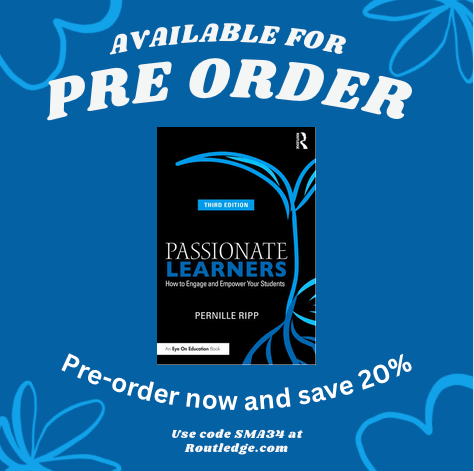
8 years ago the 2nd edition of Passionate Learners: How to Engage and Empower Your Students was released into the world.
I saw it make a difference to those who read it, educators reaching out to ask further questions, to tell me that they loved the practicality of the book, that it gave them the courage and the path to co-create spaces with students.
I wrote the book, never thinking there would be another edition because surely I had said everything I wanted to say. I had given my best advice.
But then the world changed, and I changed right along with it.
In 2015, I could never have imagined how our educational system would change in just 8 years. I could never have imagined the way our students would need us even more, how the system would give us even less, and how we would fight to maintain even a shred of respect in our profession. How a global pandemic would push us to our furthest limit and then still continue to demand more.
I could never have imagined the world I teach in now.
And so when my incredible editor, Lauren Davis, asked me if I would consider updating it, I first laughed at the idea. Why would it need to be updated?
But still, I returned to the words from 2015 to feel it out. Turns out, Pernille in 2015 had great ideas, and some not so fully developed. The teacher I was now, was so much more. That in the years between the book and now, the lessons I had learned had been hardwon but so important.
And so I wrote through the book, seeing if anything really needed to be updated. A year later, I handed in a manuscript that was so much more than that. A book that was rewritten in its entirety, with additional new focuses and units. With an additional 42 pages, with more answers and ideas than before.
I wanted to create an edition that would matter as much as the previous one. A book that continues my journey as a teacher, that admits the mistakes, shares the ideas, and hopefully gives tangible pathways to co-created spaces with students. It is the best words that I have on a journey that continues.
And now, with less than two months to go, the book is ready for pre-order. If you order it through Routledge right now, you can get a 20% off discount using the code SMA34
If you read the first or second edition, I hope you will return to see how it all evolved. To find further answers. Or to share the book. If you haven’t read any edition, I welcome you into a classroom focused on centering students while not letting the system swallow you whole.
Why now?I made myself answer why now, why bother, in the introduction, here is an excerpt…
And so, I wrote about what I know now, fourteen years into a career that has pushed me harder than anything else I have ever done. I wrote about the importance of co-creating spaces with our students that give them permission to show up the way they are. I wrote about what happens when you try to give up homework completely but can’t, or when those who are supposed to support you don’t.
I wrote with more nuance and experience than I had in the first edition, and I wrote with my husband Brandon, a new teacher himself, asking me the hardest questions about my practice.
I wrote so I could pull out all the cogs of the machine and try to present them to others so they may also change the way they teach. I wrote honestly and openly, because this journey is one I am still figuring out.
So whether you are just beginning or well on your way, I hope this book helps you along your journey toward a classroom filled with passionate learners. At the very least, it will let you know that you are not alone—that there really are better ways to teach and that there are others like you who believe the same thing.
I believed that there was one way to do school to kids. Now I know that school needs to change, and we must change it from within. Part of that change means including the voices of our students. School can no longer be done to our kids; school needs to be the place they cultivate and nourish who they see themselves as.
Here’s what I know: if I had not changed the way I taught and affected my students, I still would have been just fine. Just fine—not great, not inspiring, not life-touching, as we hope to be. A just fine teacher. But really, at the end of the day, who wants to be just fine? And don’t our children deserve so much more? Don’t we?
If you are a teacher reading this book, chances are, you’re thinking about change. But whether you need to change and what you need to change is entirely up to you. Here’s what I know: if I had not changed the way I taught and affected my students, I still would have been just fine. Just fine—not great, not inspiring, not life-touching, as we hope to be. A just fine teacher. But really, at the end of the day, who wants to be just fine? And don’t our children deserve so much more? Don’t we?
If you would like to pre-order the book from the publisher, head to this link and use the code below – preorders through them open up on May 15th
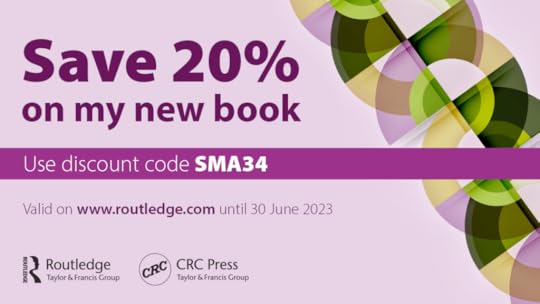
If you are required to use Amazon, use this link
And if you are in the US and would like to support indie bookstores, please do!
What’s it about, really?Well, my publisher said this about it:
Based on honest reflections on her own teaching experience, Pernille offers a wide variety of ideas for sharing control, developing your intuition, learning how to fail, giving yourself grace, building community and trust, creating more choice, allowing time for student expertise, and letting go of the punish, behave, and reward cycle so that intrinsic motivation can thrive. This fully enhanced new edition is chock full of additional strategies and tools on topics such as centering students’ identities, overcoming barriers when creating student-centered lessons to emphasize ownership of the learning cycle, shoring up your boundaries to manage your time and stop the intense prep work, changing your homework habits to reduce your load and give students more time, deemphasizing grades, and much more.
With Pernille’s heartfelt stories and practical strategies, you’ll feel inspired to give your classroom back to your students and foster a community of truly passionate learners!
And what did educators think of the 2nd edition?80 reviews on Amazon and 4.5 star rating – can’t please everyone, especially when they get mad about the price, but I am so grateful for those who found it useful.


 If you are in my Patreon…
If you are in my Patreon…Then you have a special opportunity to read it for free. So head over to that group, to see details on that.
Or join, to not only get a chance to possibly read it for free but also access all of my resources, specific book lists, mini-PD, coaching, support and anything else I can do.
PS: Are you looking for coaching, in-person support, or virtual presentations? I am available and would love to support your work. Whereas I am physically located in Denmark now, I can travel if needed. In fact, I was just in North America in February 2023 and plan on bouncing back and forth. If you would like me to be a part of your professional development, please reach out. I am here to help. For a lot more posts, resources, live and recorded professional development, please join my Patreon community where most of my sharing takes place these days.
April 13, 2023
Great Picture Books to Teach Advice and Theme (Words of the Wiser from Notice and Note)
Posted from my Patreon community where I take requests for book lists to create, share resources, and offer up coaching for members. It is a very easy way for me to be accessible to people around the world, you can join here.
I am continuing with my updates of the picture book lists I made several years ago to accompany the teaching of a variety of reading skills. This time, the focus is on Words of the Wiser or that moment when a character, often older and/or wiser, gives the main character sage advice. This advice directly speaks to the theme, the conflicts of the story, as well as character changes.
When I first started out teaching this skill, I was inspired by the language of Notice and Note: Strategies for Close Reading by Kylene Beers and Robert Probst. This book provided my students with the foundation for deeper reading conversations and a common language as we developed our thoughts and discussion skills.
I have updated four other lists so far. Here are my updated lists for Symbols (Again and again), Internal Conflict (Tough Questions), Character Change (Contrast & Contradictions), and for Flashbacks (Memory Moments).
So if you need to teach this critical reading skill, why not start with a picture book as a mentor text. Then you can offer up other picture books for students to see if they can discover it and then discuss the meaning.

Mango, Abuela, and Me by Meg Medina and illustrated by Angela Dominguez – Abuela advises Mia on the importance of communication, patience, and love while learning English.

The Remember Balloons by Jessie Oliveros and illustrated by Dana Wulfekotte: Grandpa tells James that memories are like balloons that he carries with him.

The Most Beautiful Thing by Kao Kalia Yang and illustrated by Khoa Lee – The grandmother advises her granddaughter on the importance of family, memories, and finding beauty in everyday objects.

When Aidan Became a Brother by Kyle Lukoff and illustrated by Kaylani Juanita – Aidan’s mother advises him to be patient and loving towards his new sibling, and embrace his own identity and expression.
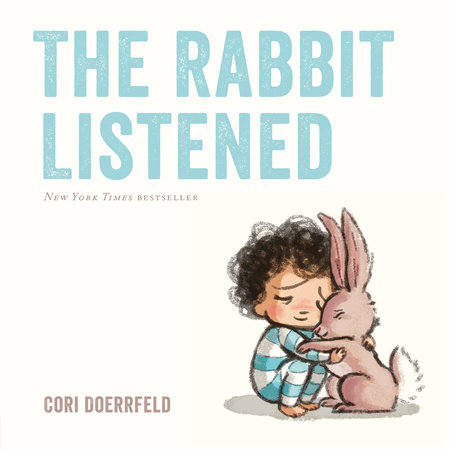
The Rabbit Listened by Cori Doerrfeld The rabbit advises Taylor to listen and be there for others when they are sad.
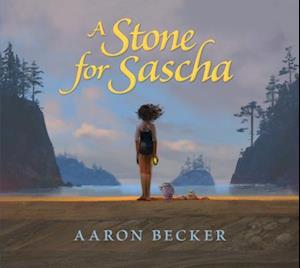
A Stone for Sascha by Aaron Becker – The old man advises Sascha to let go of her grief and see the beauty in the world.

The Couch Potato by Jory John and Pete Oswald – The wise old avocado encourages the couch potato to get up and try new things.

The Good Egg by Jory John and Pete Oswald – The wise old owl tells the good egg that it’s important to take care of yourself before taking care of others.
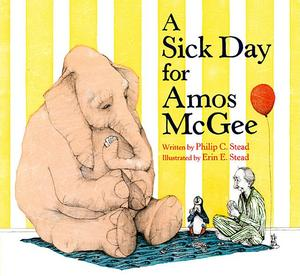
A Sick Day for Amos McGee by Philip C. Stead and illustrated by Erin E. Stead- The animals remind Amos of the importance of kindness and taking care of others.

Sulwe by Lupita Nyong’o and illustrated by Vashti Harrison – Sulwe’s mother advises her to see her inner beauty.

A Different Pond by Bao Phi and illustrated by Thi Bui- The father advises his son on the importance of hard work and sacrifice, and shares memories of his homeland.

Freedom Soup by Tami Charles and illustrated by Jacqueline Alcantara – The grandmother advises her granddaughter on the history and cultural significance of their Haitian soup recipe.
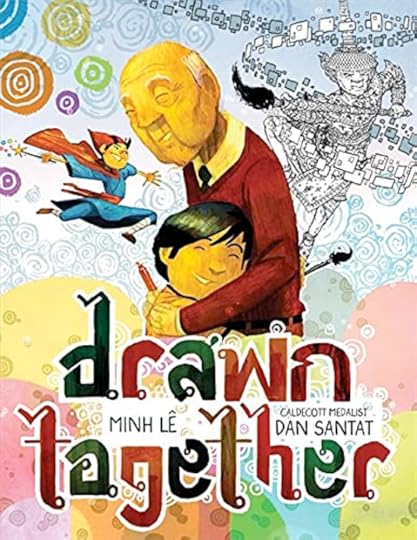
Drawn Together by Minh Lê and illustrated by Dan Santat- The grandfather advises his grandson to use art to bridge their language and cultural barriers.

Be Kind by Pat Zietlow Miller and illustrated by Jen Hill- The teacher advises her student to always choose kindness towards others.

Thank You, Omu! by Oge Mora – Omu’s neighbors advise her to share her delicious stew with the community.

Jabari Jumps” by Gaia Cornwall – Jabari’s father advises him to conquer his fears with courage and determination.
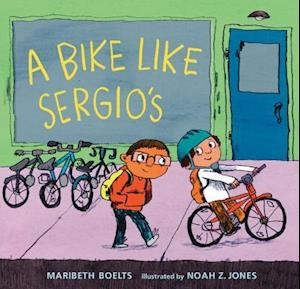
A Bike Like Sergio’s by Maribeth Boelts and illustrated Noah Z. Jones – Ruben’s mother advises him to be grateful for what he has and to save up for a new bike.

The Proudest Blue: A Story of Hijab and Family by Ibtihaj Muhammad and illustrated by Hatem Aly – Asiya’s mother advises her to be proud of her hijab.

Let the Children March” by Monica Clark-Robinson and illustrated by Frank Morrison – The parents advise their children to stand up for what is right.
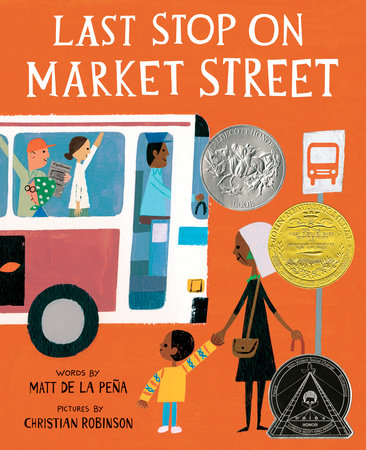
The Last Stop on Market Street by Matt de la Peña and illustrated by Christian Robinson – CJ’s grandmother advises him to see the beauty in the world around him.

My Papi Has a Motorcycle by Isabel Quintero and illustrated by Zeke Peña – Daisy’s father advises her to remember her roots as they ride through their neighborhood.

The Power of Her Pen: The Story of Groundbreaking Journalist Ethel L. Payne by Lesa Cline-Ransome and illustrated by John Parra – Ethel’s father advises her to use her voice to speak up for what is right.
Titles shared previously:
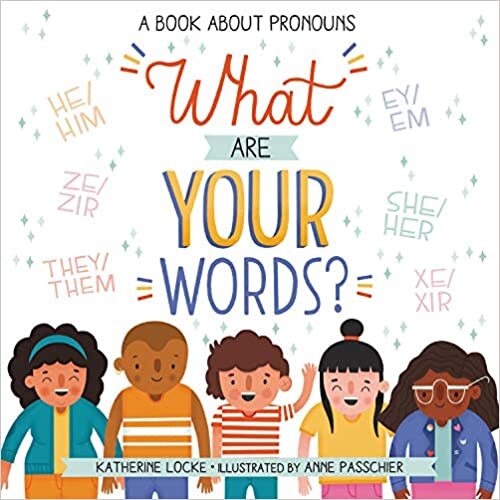
What Are your Words? A Book About Pronouns by Katherine Locke and illustrated by Anne Passchier. Ari’s uncle Lior gives some great advice when it comes to choosing his pronouns.
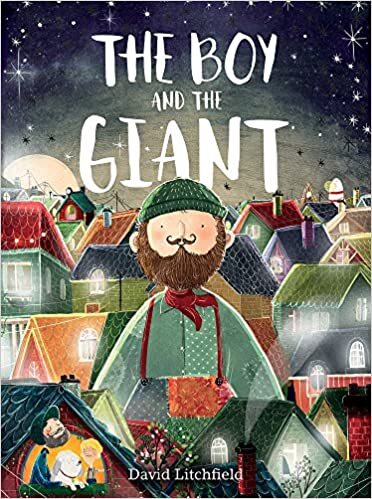
The Boy and the Giant by David Litchfield
Grandpa gives Billy good advice when he professes he is scared of the giant.
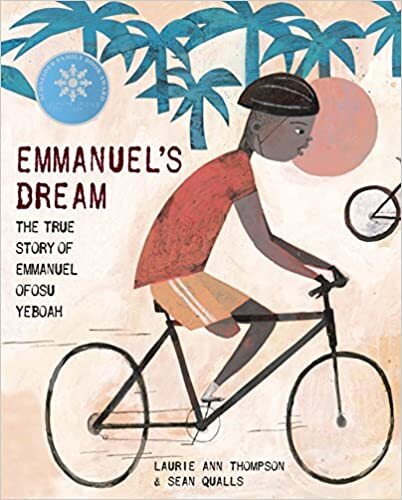
Emmanuel’s Dream by Laurie Ann Thompson and Sean Qualls
The aha moment is mixed in with words of the wiser from Emmanuel’s mother and is embedded into the story. This is a good book to use when it may not be as obvious.
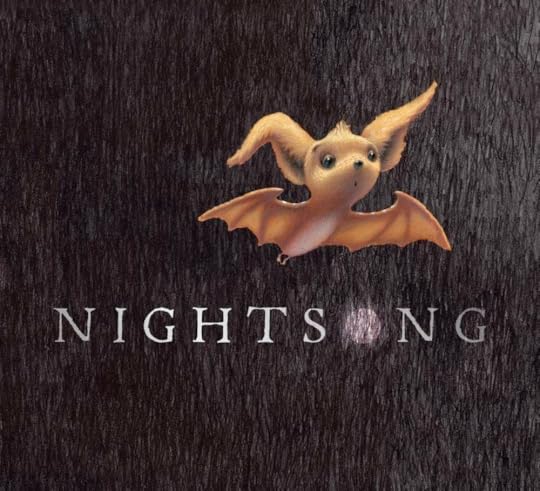
Great wisdom from the mother bat to the baby as he prepares to take off into the night in Ari Berk and Loren Long’s Nightsong.
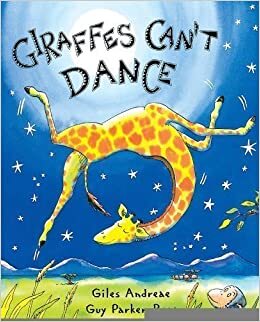
Who says giraffes can’t dance? Thankfully some wisdom is given in Giraffe’s Can’t Dance by Giles Andrede
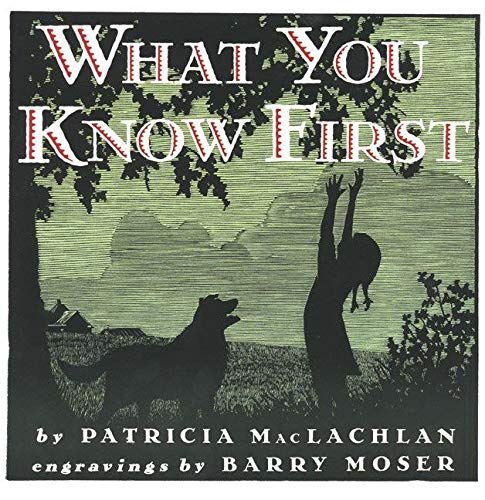
Because what we know first will always help us in our lives, I love What You Know First by Patricia MacLachlan.
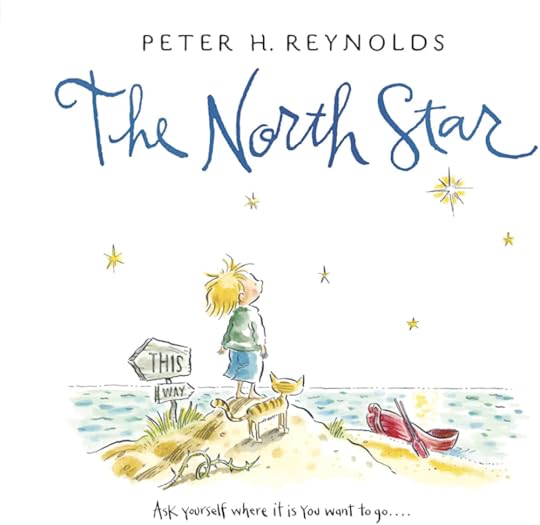
I have had a Peter H. Reynolds book on every list so far, I am pretty sure you can teach all 6 signposts using his books. The North Star will always be one of my favorites. The Dot is another great one.
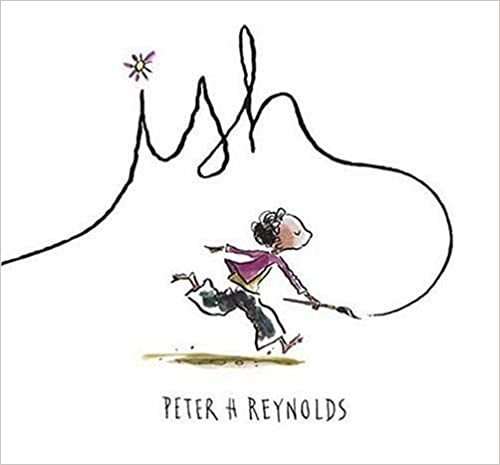
Ish also by Peter H. Reynolds also has great wisdom.
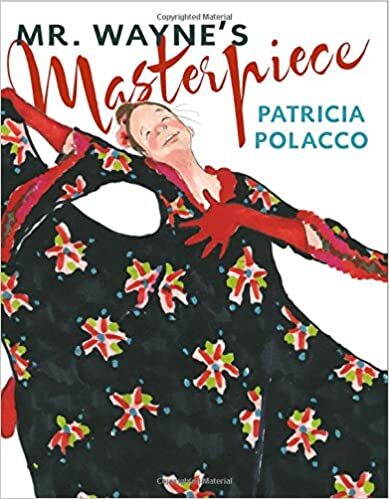
Many of Patricia Polacco’s books can be used for words of the wiser, here I chose Mr. Wayne’s Masterpiece.

Zero by Kathryn Otoshi is a picture book that can be used for many things, teaching words of the wiser is definitely one of them.

When the students wonder when they will finally get tall, this is a great book to pull out You’ll Grow Soon, Alex by Andrea Shavick and Russell Ayto has great wisdom.
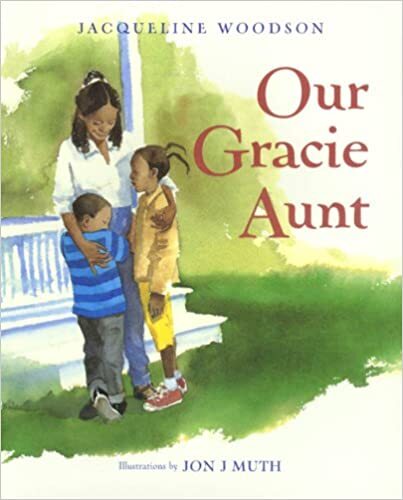
Our Gracie Aunt by Jacqueline Woodson is the book I am using with my students to teach the strategy. It is a beautiful story that will start discussion in our classroom for sure. Each Kindness also by Woodson is another amazing example. In fact, many of her books can be used for this strategy.
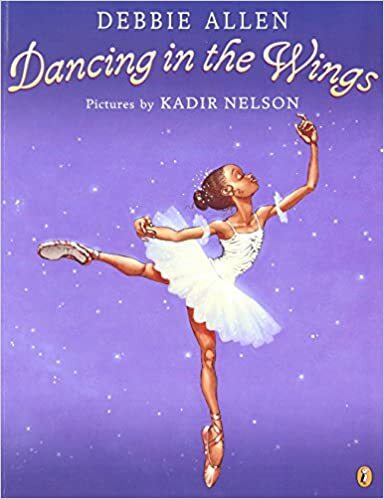
I love stories about following your dreams and Dancing in the Wings by Debbie Allen fits the mold.
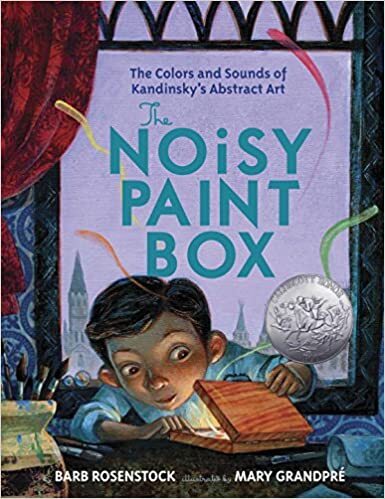
The Noisy Paint Box by Barb Rosenstock is a beautiful reminder to follow your dreams.
I know there are so many more out there, please leave your favorites in the comments.
PS: Are you looking for coaching, in-person support, or virtual presentations? I am available and would love to support your work. Whereas I am physically located in Denmark now, I can travel if needed. In fact, I was just in North America in February 2023 and plan on bouncing back and forth. If you would like me to be a part of your professional development, please reach out. I am here to help. For a lot more posts, resources, live and recorded professional development, please join my Patreon community where most of my sharing takes place these days.
April 12, 2023
What We Owe
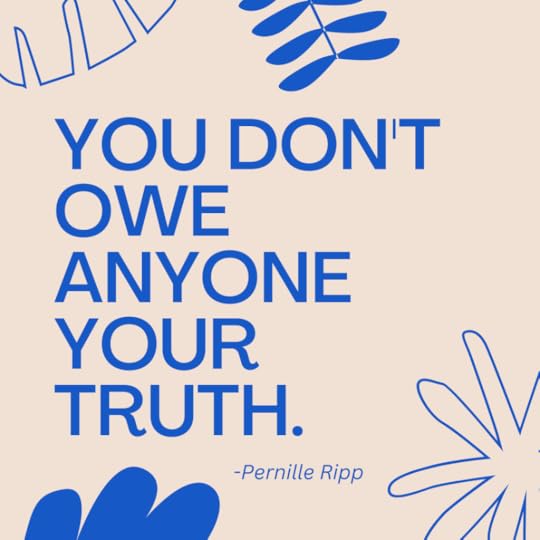
As our kids are getting older, we talk a lot about healthy relationships, boundaries, and consent. Not just in romantic relationships, but in all the ones they have – with friends, with authority figures, with us.
And one of the lessons we are teaching them is that they have the right to answer no. To withhold information requested by others that have no business asking for it. To not give the full story, or stay silent if needed.
Too often, we teach kids that when someone asks you a question you answer it, but at what expense? When do we teach kids that just because someone answered doesn’t mean they have to give an answer?
Because our kids don’t owe anyone their truth. They don’t have to share about themselves just because someone asks.
And we need to remember that in our classrooms as well. That just because we survey kids, doesn’t mean they have to answer. That not answering is an answer in itself.
That we build trust, not demand it. That we recognize when something is not our business. That we consider what we are actually asking BEFORE we ask.
And that if a child says no, IDK, or leaves it blank that perhaps it is not because they are obstinate but because they are exercising their right to not answer.
As I wrote through Passionate Learners 3rd Edition, the idea of control and power were ever-present. The way we demand acquiescence. That we demand to be followed blindly. That we don’t take the opportunities that present themselves to dive into the power dynamics present within our teaching and consider how we can shift power back to students.
But we demand their words. We command their attention. And we label them when they don’t bend to our will.
Shifting our power balance so that the children in our care also get to have power while also functioning as a class community is not always easy. It takes time, it takes patience, and it takes trust. But it is possible. That’s why I wrote the 3rd edition so that I could share ideas of how we respect all children within a functioning co-created classroom.
To offer up the small and big ideas that meant that control was shared, that power was given, that there was room to say no and not get in trouble.
Whether you read the book or not, please consider your demands. Please consider who you are asking to share what. Please consider what happens when we ask kids to share beyond their comfort levels.
What model are we creating for them when it comes to autonomy, power, and respect?
Saying no takes courage. Staying silent can be an act of strength. Not something to be punished. Not something to be yelled out of a child. How do we create classrooms that support that?
PS: Are you looking for coaching, in-person support, or virtual presentations? I am available and would love to support your work. Whereas I am physically located in Denmark now, I can travel if needed. In fact, I was just in North America in February 2023 and bounce back and forth. If you would like me to be a part of your professional development, please reach out. I am here to help. For a lot more posts, resources, live and recorded professional development, please join my Patreon community where most of my sharing takes place these days.
April 10, 2023
Pre-order Passionate Learners 3rd Edition now!

8 years ago the 2nd edition of Passionate Learners: How to Engage and Empower Your Students was released into the world.
I saw it make a difference to those who read it, educators reaching out to ask further questions, to tell me that they loved the practicality of the book, that it gave them the courage and the path to co-create spaces with students.
I wrote the book, never thinking there would be another edition because surely I had said everything I wanted to say. I had given my best advice.
But then the world changed, and I changed right along with it.
In 2015, I could never have imagined how our educational system would change in just 8 years. I could never have imagined the way our students would need us even more, how the system would give us even less, and how we would fight to maintain even a shred of respect in our profession. How a global pandemic would push us to our furthest limit and then still continue to demand more.
I could never have imagined the world I teach in now.
And so when my incredible editor, Lauren Davis, asked me if I would consider updating it, I first laughed at the idea. Why would it need to be updated?
But still, I returned to the words from 2015 to feel it out. Turns out, Pernille in 2015 had great ideas, and some not so fully developed. The teacher I was now, was so much more. That in the years between the book and now, the lessons I had learned had been hardwon but so important.
And so I wrote through the book, seeing if anything really needed to be updated. A year later, I handed in a manuscript that was so much more than that. A book that was rewritten in its entirety, with additional new focuses and units. With an additional 42 pages, with more answers and ideas than before.
I wanted to create an edition that would matter as much as the previous one. A book that continues my journey as a teacher, that admits the mistakes, shares the ideas, and hopefully gives tangible pathways to co-created spaces with students. It is the best words that I have on a journey that continues.
And now, with less than two months to go, the book is ready for pre-order. If you order it through Routledge right now, you can get a 20% off discount using the code SMA34
If you read the first or second edition, I hope you will return to see how it all evolved. To find further answers. Or to share the book. If you haven’t read any edition, I welcome you into a classroom focused on centering students while not letting the system swallow you whole.
Why now?I made myself answer why now, why bother, in the introduction, here is an excerpt…
And so, I wrote about what I know now, fourteen years into a career that has pushed me harder than anything else I have ever done. I wrote about the importance of co-creating spaces with our students that give them permission to show up the way they are. I wrote about what happens when you try to give up homework completely but can’t, or when those who are supposed to support you don’t.
I wrote with more nuance and experience than I had in the first edition, and I wrote with my husband Brandon, a new teacher himself, asking me the hardest questions about my practice.
I wrote so I could pull out all the cogs of the machine and try to present them to others so they may also change the way they teach. I wrote honestly and openly, because this journey is one I am still figuring out.
So whether you are just beginning or well on your way, I hope this book helps you along your journey toward a classroom filled with passionate learners. At the very least, it will let you know that you are not alone—that there really are better ways to teach and that there are others like you who believe the same thing.
I believed that there was one way to do school to kids. Now I know that school needs to change, and we must change it from within. Part of that change means including the voices of our students. School can no longer be done to our kids; school needs to be the place they cultivate and nourish who they see themselves as.
Here’s what I know: if I had not changed the way I taught and affected my students, I still would have been just fine. Just fine—not great, not inspiring, not life-touching, as we hope to be. A just fine teacher. But really, at the end of the day, who wants to be just fine? And don’t our children deserve so much more? Don’t we?
If you are a teacher reading this book, chances are, you’re thinking about change. But whether you need to change and what you need to change is entirely up to you. Here’s what I know: if I had not changed the way I taught and affected my students, I still would have been just fine. Just fine—not great, not inspiring, not life-touching, as we hope to be. A just fine teacher. But really, at the end of the day, who wants to be just fine? And don’t our children deserve so much more? Don’t we?
If you would like to pre-order the book from the publisher, head to this link and use the code below

If you are required to use Amazon, use this link
And if you are in the US and would like to support indie bookstores, please do!
What’s it about, really?Well, my publisher said this about it:
Based on honest reflections on her own teaching experience, Pernille offers a wide variety of ideas for sharing control, developing your intuition, learning how to fail, giving yourself grace, building community and trust, creating more choice, allowing time for student expertise, and letting go of the punish, behave, and reward cycle so that intrinsic motivation can thrive. This fully enhanced new edition is chock full of additional strategies and tools on topics such as centering students’ identities, overcoming barriers when creating student-centered lessons to emphasize ownership of the learning cycle, shoring up your boundaries to manage your time and stop the intense prep work, changing your homework habits to reduce your load and give students more time, deemphasizing grades, and much more.
With Pernille’s heartfelt stories and practical strategies, you’ll feel inspired to give your classroom back to your students and foster a community of truly passionate learners!
And what did educators think of the 2nd edition?80 reviews on Amazon and 4.5 star rating – can’t please everyone, especially when they get mad about the price, but I am so grateful for those who found it useful.


 If you are in my Patreon…
If you are in my Patreon…Then you have a special opportunity to read it for free. So head over to that group, to see details on that.
Or join, to not only get a chance to possibly read it for free but also access all of my resources, specific book lists, mini-PD, coaching, support and anything else I can do.
PS: Are you looking for coaching, in-person support, or virtual presentations? I am available and would love to support your work. Whereas I am physically located in Denmark now, I can travel if needed. In fact, I was just in North America in February 2023 and plan on bouncing back and forth. If you would like me to be a part of your professional development, please reach out. I am here to help. For a lot more posts, resources, live and recorded professional development, please join my Patreon community where most of my sharing takes place these days.
March 10, 2023
Great Picture Books to Teach Symbols (Again and Again from Notice and Note)
Posted from my Patreon community where I take requests for book lists to create, share resources, and offer up coaching for members. It is a very easy way for me to be accessible to people around the world, you can join here.
I am continuing with my updates of the picture book lists I made several years ago to accompany the teaching of a variety of reading skills. This time, the focus is on “Symbols” (Again and Again for Notice and Note) or that moment something seemingly inconsequential takes on a more significant meaning. It can be a word, a phrase, an object, or an action that repeats. This can give us a further clue about the conflicts of the story, the theme of the story, or even foreshadow the story.
When I first started out teaching this skill, I was inspired by the language of Notice and Note: Strategies for Close Reading by Kylene Beers and Robert Probst. This book provided my students with the foundation for deeper reading conversations and a common language as we developed our thoughts and discussion skills.
I have updated three other lists so far. Here are my updated lists for Internal Conflict (Tough Questions), Character Change (Contrast & Contradictions), and for Flashbacks (Memory Moments).

The Rabbit Listened by Cori Doerrfeld: The phrase “The rabbit listened” is repeated multiple times throughout the story, emphasizing the importance of empathy and listening to others.

The Remember Balloons by Jessie Oliveros and illustrated by Dana Wulfekotte: The character’s memories are depicted as balloons that are repeated throughout the illustrations, emphasizing the importance of memories and their impact on our lives.

The Bad Seed by Jory John and illustrated by Pete Oswald: The phrase “I’m a bad seed” is repeated several times, showing the character’s struggle with his identity and eventually his growth and change.
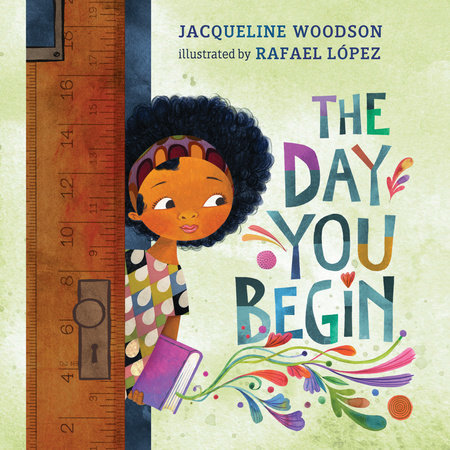
The Day You Begin by Jacqueline Woodson and illustrated by Rafael López: The phrase “There will be times when you walk into a room and no one there is quite like you” is repeated multiple times, highlighting the theme of diversity and the importance of embracing differences.
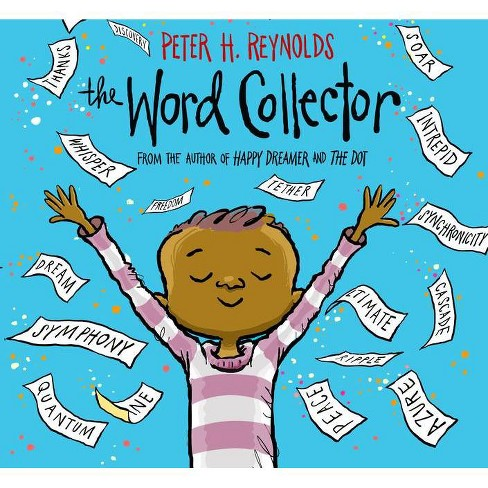
The Word Collector by Peter H. Reynolds: The main character collects words and repeats them throughout the story, emphasizing the power of language and the joy of learning new words.

Drawn Together by Minh Lê and illustrated by Dan Santat: The phrase “No words” is repeated throughout the story, highlighting the characters’ communication barriers and eventual connection through art.

We Don’t Eat Our Classmates by Ryan T. Higgins: The phrase “We don’t eat our classmates” is repeated multiple times, emphasizing the importance of treating others with kindness and respect.

Be Kind by Pat Zietlow Miller and illustrated by Jen Hill: The phrase “No one is born a jerk” is repeated several times, showing the character’s growth and change as she learns to be kind.

Love by Matt de la Peña and illustrated by Loren Long: The word “love” is repeated throughout the story, highlighting the different forms of love and its importance in our lives.

Crown: An Ode to the Fresh Cut by Derrick Barnes and illustrated by Gordon C. James: The phrase “You came in as a lump of clay, a blank, canvas, a mingi, a rough draft” is repeated multiple times, emphasizing the transformative power of a fresh haircut and how we build power

.
The Little Red Fort by Brenda Maier and illustrated by Sonia Sánchez: The phrase “She asked her brothers to help, but they said no” is repeated several times, showing the character’s determination and persistence in building the fort on her own.

They Say Blue by Jillian Tamaki: The phrase “They say blue is sad, like a lonely song” is repeated throughout the story, exploring the different emotions and meanings associated with the color blue.
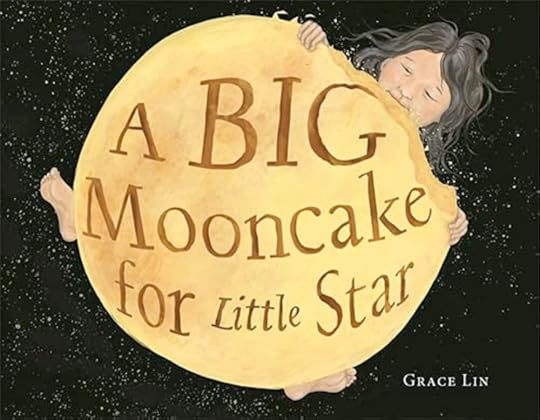
A Big Mooncake for Little Star by Grace Lin: The phrase “Little Star gazed down at the big mooncake” is repeated throughout the story, emphasizing the character’s curiosity and eventual consumption of the mooncake.

The Wall in the Middle of the Book by Jon Agee: The phrase “The wall protects this side of the book” is repeated throughout the story, emphasizing the character’s ignorance of the dangers on his side of the wall.

Dreamers by Yuyi Morales: The phrase “We didn’t know the language” is repeated several times, emphasizing the character’s immigrant experience and the challenges of adapting to a new culture.

When Things Aren’t Going Right, Go Left by Marc Colagiovanni and illustrated by Peter H. Reynolds: Quite literal symbols are emplyed as the main character leaves their burdens behind, great intro ttext for younger students.
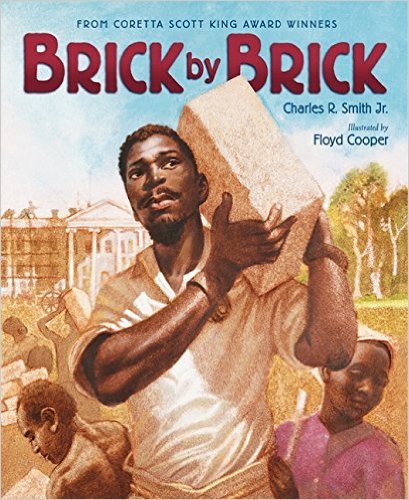
Brick by Brick by Charles R. Smith Jr. and illustrated by Floyd Cooper tells the little known story of how slaves were part of the construction of The White House. Powerful read and powerful Again and Again moments.

Back of the Bus written by Aaron Reynolds and illustrated by Floyd Cooper tells the story of Rosa Park’s act of courage from the perspective of a little boy on the bus. Powerful again and again when students notice the symbolism of the marble.
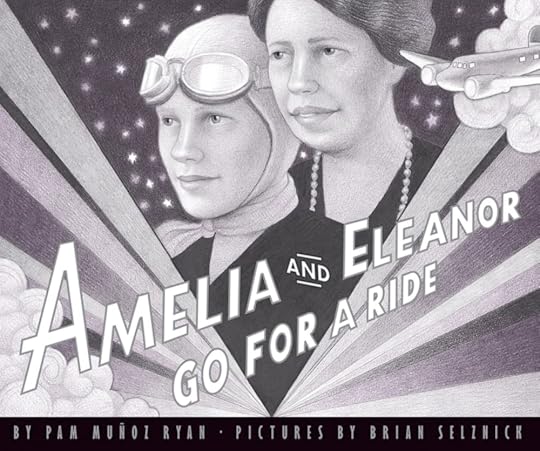
Amelia and Eleanor Go For a Ride written by Pam Munoz Ryan and illustrated by Brian Selznick has a few subtle Again and Again’s and may therefore be better suited for when students have had some exposure to the strategy.

I admit that The North Star by Peter H. Reynolds was the first one that came to mind for this strategy of noticing when something is repeated again and again. Why? Because the cat becomes a symbol for so many things in this book and is something that my students often notice.
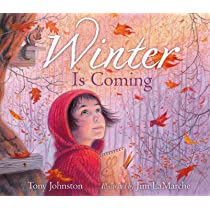
With the simple line “Winter is coming” this picture book aptly titled Winter is Coming by Tony Johnston and illustrated by Jim LaMarche is great for just starting out with the strategy since the line is easy to spot and will lead to good discussions about how the book changes even though the line stays the same.

The Big Box by Toni Morrison and Slade Morrison illustrated by Giselle Potter has a lot of repetition making it an ideal candidate for again and again. Because the words do not seem to mean much until you really start to think about their meaning. What is the symbolic meaning of the big box?
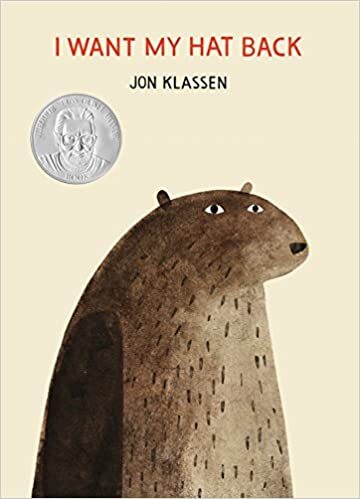
One of the most beloved picture books in our 7th grade classroom is I Want My Hat Back by Jon Klassen which due to the hat and the repeated phrases of the bear and the rabbit are great for inferring based on the again and again moments.

Another favorite is Wolfie the Bunny by Ame Dyckman illustrated by Zachariah OHora when Dot the Rabbit keeps repeating that Wolfie will eat them all up. This leads to some great discussion of why she would keep saying that and how we do the same as people when we judge.
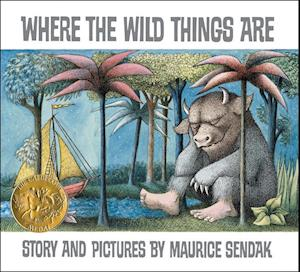
The again and again moment may be a little harder to find in the classic Where the Wild Things Are by Maurice Sendak but kids always recognize it when they reach the final page and the supper is still hot. Why does this matter and how does it link in to earlier events?

A Sweet Smell of Roses by Angela Johnson is a beautiful picture book and the again and again lies in the use of the color red as well as the phrase “Sweet smell of roses…” throughout the book.
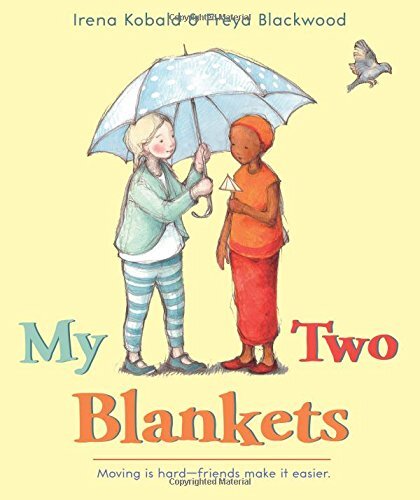
this beautiful new picture book, My Two Blankets by Irena Kobold and Freya Blackwood keeps eluding to a blanket. I love the metaphor that the blanket (s) represent.
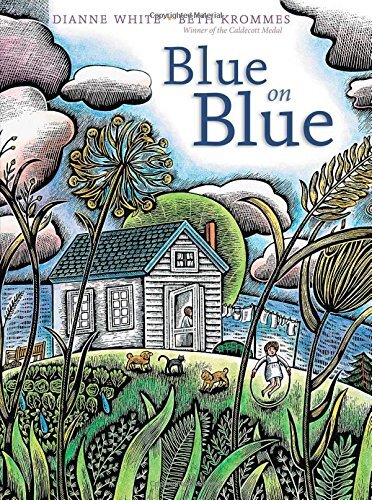
Blue on Blue by Dianne White and Beth Krommes has a fantastic again and again in the way the color words are used. While not as obvious as an again and again moment, I am looking forward to seeing if students can discover the pattern.
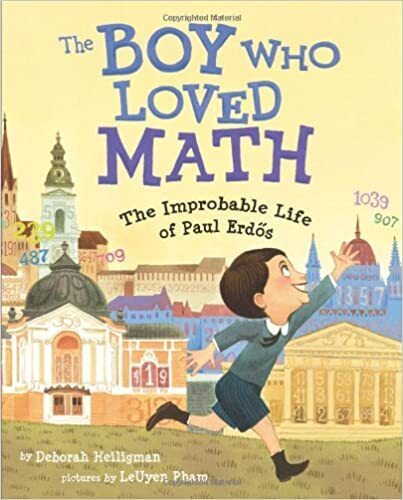
We are about to start our nonfiction focus for the year so I am so glad I found some great again and again moments in The Boy Who Loved Math by Deborah Helligman with pictures by LeUyen Pham. The way the numbers are colored throughout the pages will definitely catch the eye of students.
As always, I turned to the awesome Notice and Note community on Facebook and asked them to share their favorites as well. Here they are.
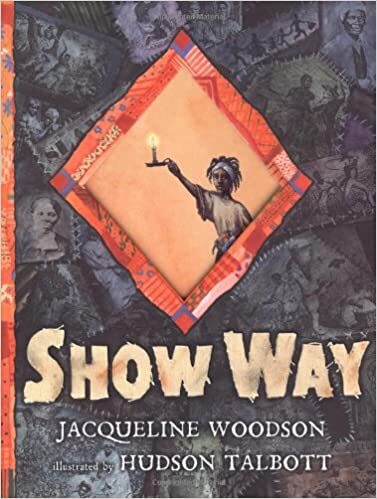
Show Way by Jacqueline Woodson.
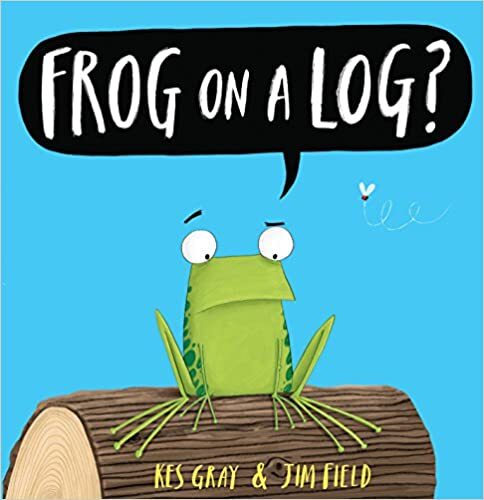
Frog on a Log? by Kes Gray and Jim Field.
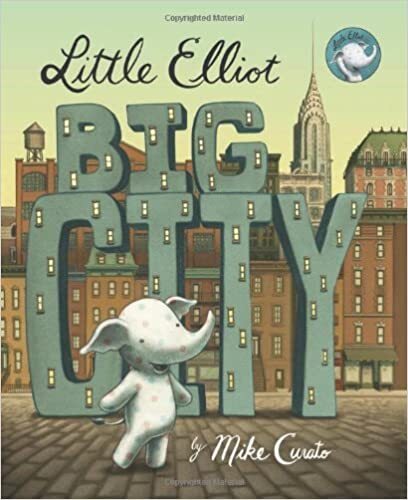
Little Elliot Big City by Mike Curato
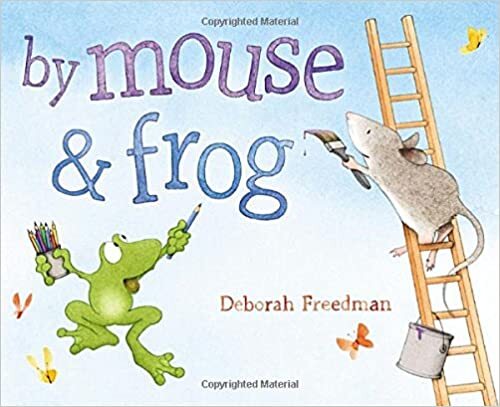
By Frog and Mouse by Deborah Freedman
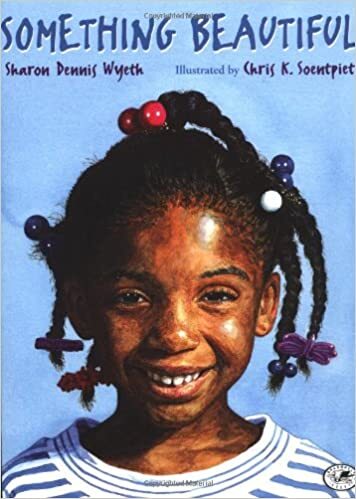
Something Beautiful by Sharon Dennis Wyeth
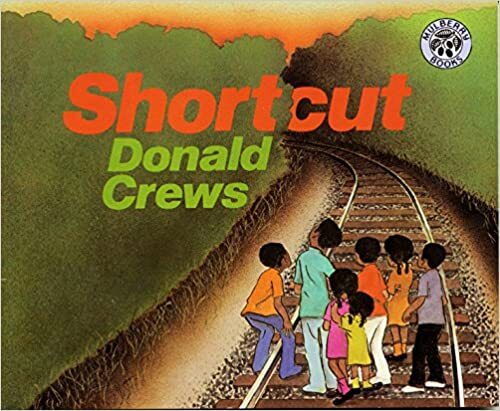
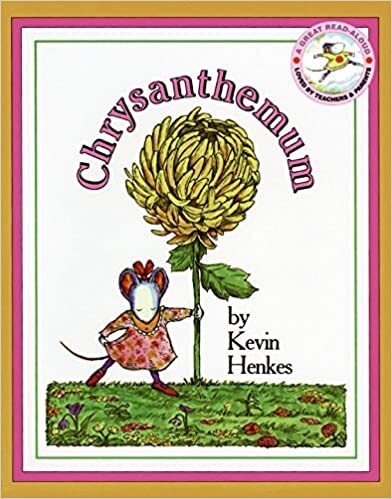
Chrysanthemum by Kevin Henkes.
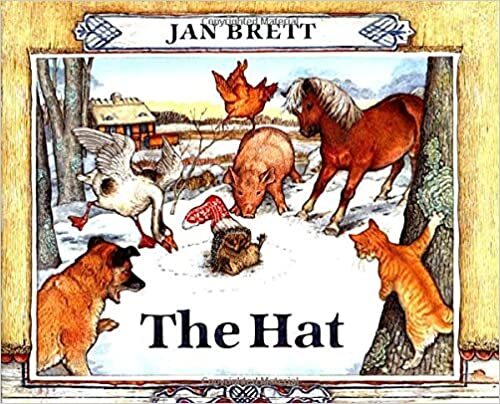
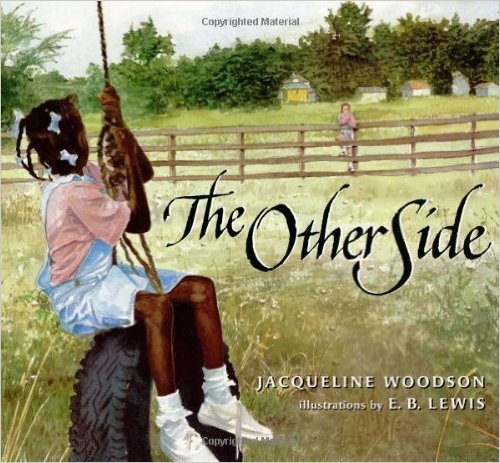
The Other Side by Jacqueline Woodson
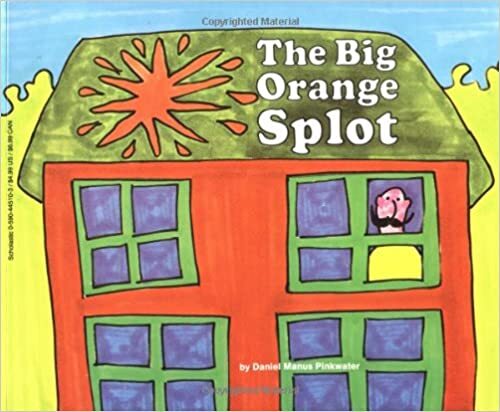
The Big Orange Splot by Daniel Manus Pinkwater
As always, please add your favorites for Again and Again in the comments
February 19, 2023
Great Picture Books to Teach Internal Conflict (Tough Questions from Notice and Note)
Posted from my Patreon community where I take requests for book lists to create, share resources, and offer up coaching for members. It is a very easy way for me to be accessible to people around the world, you can join here.
I am continuing with my updates of the picture book lists I made several years ago to accompany the teaching of a variety of reading skills. This time, the focus is on “Internal Conflict” or that moment when a character asks a large question in order to try to make sense of themselves or the story. This can give us a further clue as to who they are, the conflicts of the story, why they may be acting the way they are, the theme of the story, or even predict the future.
When I first started out teaching this skill, I was inspired by the language of Notice and Note: Strategies for Close Reading by Kylene Beers and Robert Probst. This book provided my students with the foundation for deeper reading conversations and a common language as we developed our thoughts and discussion skills.
I have updated two other lists so far. Here are my updated lists for Character Change (Contrast & Contradictions) and for Flashbacks (Memory Moments).
Thank you to everyone who offered up suggestions of what to add to the list.

The Talk by Alicia D. Williams and illustrated by Briana Mukodri Uchendu

Nigel and the Moon by Antwan Eady and illustrated by Gracey Zhang

Carmela Full of Wishes by Matt de la Peña and illustrated by Christian Robinson

All the Way to the Top by Annette Bay Pimentel and pictures by Nabi H. Ali

There Must Be Something More Than by Shinsuke Yoshitake
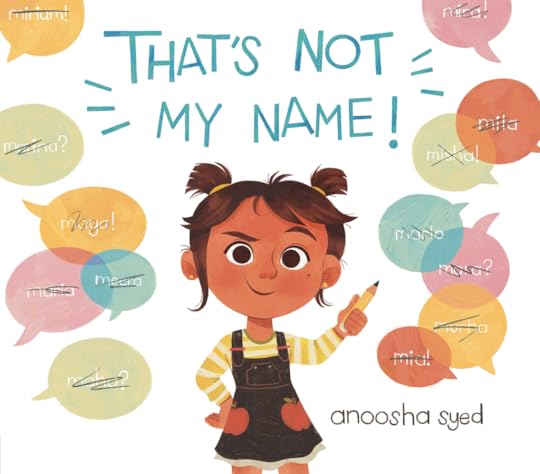

Adrian Simcox Does Not Have a Horse by Marcy Campbell and illustrated by Corinne Luyken
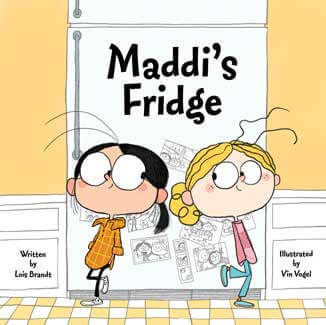
Maddi’s Fridge by Lois Brandt and illustrated by Vin Vogel
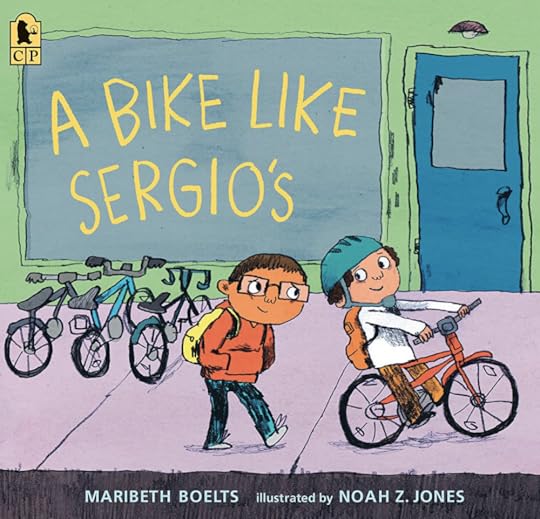
A Bike like Sergio’s by Maribeth Bolts illustrated by Noah Z. Jones


Last Stop on Market Street by Matt de la Peña and illustrated by Christian Robinson

Emily’s Blue Period by Cathleen Daly and illustrated by Lisa Brown
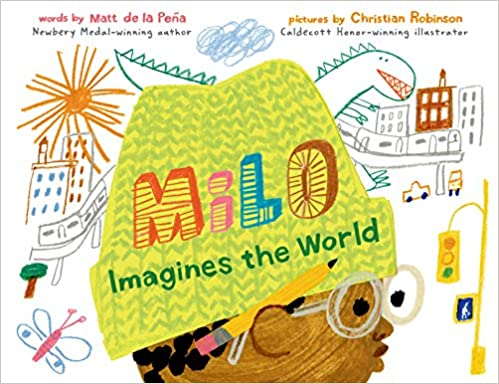
Milo Imagines the World by Matt de la Peña and illustrated by Christian Robinson

Stillwater and Koo Save the World by Jon J Muth

I Didn’t Stand Up by Lucy Falcone and illustrated by Jacqueline Hudon

Each Kindness by Jacqueline Woodson and illustrated by E.B. Lewis

I Hate Everyone by Naomi Danis and illustrated by Cinta Arribas

The Other Side by Jacqueline Woodson and illustrated by E.B. Lewis

Where’s Rodney? by Carmen Bogan and illustrated by Floyd Cooper

Don’t Play With Your Food by Bob Shea

I’m Sad by Michael Ian Black and illustrated by Debbie Ridpath Ohi

What Do You Do With a Problem? written by Kobi Yamada and illustrated by Mac Besom
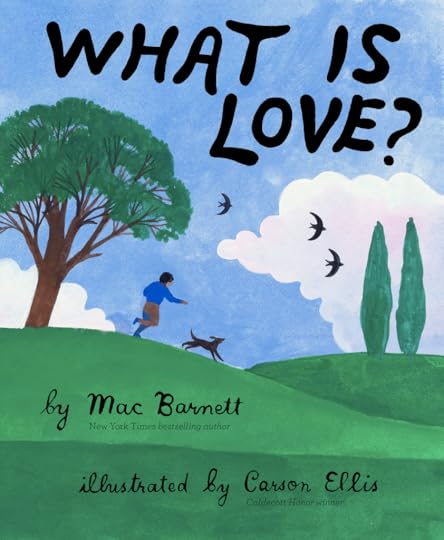
What is Love by Mac Barnett and illustrated by Carson Ellis
Old Ideas

White Water by Michael S. Bandy and Eric Stein has several tough questions in it and also doubles as an amazing book to discuss a really powerful topic with students; racial segregation. This is the book I used to introduce the strategy to my students with the bonus of having aha moments and a contrast and contradiction in it as well.

The Three Questions by Jon J. Muth starts out with three obvious tough questions and then explores them the rest of the book.

A book near and dear to my heart The Yellow Star By Carmen Agra Deedy. Although the story is not true, it still speaks of my people’s fight against the Nazi occupation and opens up great conversations. The tough question is when King Christian wonders what can be done to fight the yellow stars.

What Do You Do With An Idea? by Kobi Yamada is a book I use a lot in the classroom as it is great for inferencing, and inspiring creativity, but it also works well for this strategy as it starts out with tough questions and then has several more further in.

The Numberlys By William Joyce and Christina Ellis has several tough questions and is definitely a great way to highlight conflict.

The tough question is not posed as a question in Henry’s Freedom Box by Ellen Levine but instead as a desire to be free. I would use this later in the strategy to teach students that tough questions are not always in a question format.

Boats for Papa by Jessixa Bagley only has one question in it but it will lead to great questions and will also be a great inference exercise.
Crowd Sourced Ideas

The Rainbow Fish by Marcus Pfister

Train to Somewhere by Eve Bunting

The Gold Coin by Alma Flor Ada

Riding the Tiger by Eve Bunting

The Old Woman Who Named Things by Cynthia Rylant



Wanda’s First Day by Mark Sperring

Alexander and the Wind-Up Mouse by Leo Lionnei

Pink and Say by Patricia Polacco
Did I miss any? If you are wondering how I use these picture books, just ask, and I will gladly share ideas.
PS: Are you looking for coaching, in-person support, or virtual presentations? I am available and would love to support your work. Whereas I am physically located in Denmark now, I can travel if needed. In fact, I will be in the US and Canada in February 2023. If you would like me to be a part of your professional development, please reach out. I am here to help. For a lot more posts, resources, live and recorded professional development, please join my Patreon community where most of my sharing takes place these days.



